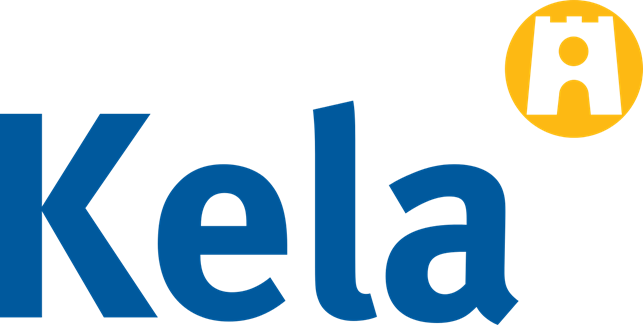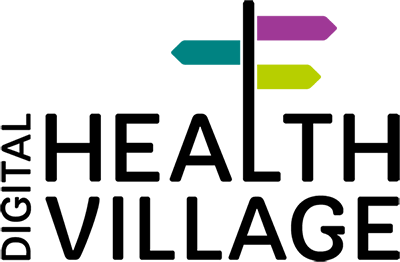For me “being a good digital citizen” means using the internet responsibly and respectfully. This includes acting ethically online, respecting others’ privacy, and engaging in positive interactions on digital platforms. Good digital citizens are aware of online risks and work to ensure safety in the digital community. Overall, practicing good digital citizenship helps create a positive and healthy online environment.
KELA -The Social Insurance Institution of Finland

Kela, the Social Insurance Institution of Finland, is important for making sure Finland’s social security system works well. This system is designed to make sure that everyone, families and individuals alike, has a decent standard of living by lessening the gap in incomes. I think most people use or have used Kela’s support in different life situations.
At the moment, I am benefiting from the following services provided by Kela:
Meal Subsiby: by showing my electronic student card, I can get a cheaper meal.
Healthcare fee: this is fee for students in higher education, I pay a healthcare fee to Kela and i have the right to use the services of the Finnish Student Health Service (FSHS). I need to pay the fee even if I wouldn’t use the services.
Reimbursed for medicines: Treatments prescribed for my illness can be refunded, including medicines, clinical nutrients, and creams.
KELA support for my falmily:
Child Benefit: I have two children. My children are 8 and 11 years old. KELA provides child benefit for each child residing permanently in Finland until they turn 17.
When a child gets ill: I can take them to either the local health center or a private doctor. KELA reimburses part of the fees charged by private doctors and some of the costs for examinations and treatments prescribed by the doctor. KELA does not cover treatments provided at municipal health centers, but it also contributes to some of the expenses for prescribed medicines.
About the European Health Insurance Card (EHIC)..
I already have a health card for Europe. I might need a special health card called the European Health Insurance Card (EHIC) if I get sick suddenly or have an accident in some countries like in Europe, Switzerland, the UK, or Northern Ireland. This card helps me get medical care, and it won’t cost too much. The government office called Kela will pay for it. ‘I already have a health card for Europe.
Sources I used: Our Services | Kela
KANTA -Digital Services for the Social Welfare and Health Care Sector

OmaKanta is a helpful online service in Finland that allows individuals to access their personal health information. Through OmaKanta, people can view details about their medications, vaccinations, and medical records. It’s a convenient way to keep track of your health-related data and stay informed about your medical history. Users can also check upcoming appointments, receive electronic prescriptions, and securely communicate with healthcare professionals. OmaKanta plays a key role in empowering individuals to actively manage their health and well-being. I also can check my childrens health records in OmaKanta.
Logging into OmaKanta involves using strong electronic identification methods, such as online banking credentials or a mobile certificate. I use bank codes to logg in to service. I haven´t had any problems to use this service. I use Oma often, so it has become familiar to me.
Sources I used: MyKanta – Citizens – Kanta.fi
KEVA -Finland’s Largest Pension Provider

Keva refers to the Pension Fund in Finland. Keva is responsible for managing the pensions of local government employees, such as those working for municipalities, joint municipal authorities, and other local government employers.
Keva plays a key role in administering and safeguarding pension assets, ensuring that eligible individuals receive their pensions in retirement. The organization manages pension contributions, investments, and the overall pension system for local government employees in Finland.
Keva provides a digital platform that allows users to review their pension records, assess the accrued pension to date, and estimate future pension amounts through a convenient pension calculator.
I accessed the digital service using my banking credentials and reviewed my personal information. Keva’s calculator shows that I can retire earliest 67 years and two months old. My target retirement age is 69 and five months. Talking about pensions may be private, but there’s a big difference between retiring at 67 and 69: My pension will grow almost 20%.
Sources I used: Front page – Keva
Navigating the Digital Marketplace: Price, Information, and Reliability

My task was to visit digital shops such as eBay, Amazon, Booking.com and Trivago and assess prices against local shops. In addition to comparing prices, I paid particular attention to the adequacy of information and the reliability of services. Examining user experiences and reading customer reviews provided valuable information on how well services meet customer expectations. In addition, I looked at the clarity of the websites and how comprehensively they provided product information and delivery terms. Comparing local prices helped me to understand how competitive digital shops are compared to physical shops. Ultimately, my goal was to get an overall picture of which service offered the best value for money and a reliable customer experience.
The prizes of digital shops are usually cheaper than the prizes of usual local shops. This is because of self-service. The information available to the customer may be limited, but it varies depending on the online store.
In my opinion, Booking.com and Trivago offer information well, but eBay and Amazon don’t always offer information clearly. The quality of some international digital shops isn’t always good.
Getting to know the Booking.com
Booking.com is a widely recognized online travel agency that specializes in facilitating reservations for various travel services. Renowned for its extensive array of accommodations, ranging from hotels to apartments, Booking.com provides users with a global platform to explore and book diverse travel options.
The user-friendly interface allows travelers to easily navigate through different listings, filtering based on preferences such as location, price, and guest reviews. The platform’s global reach ensures that users can find options in destinations worldwide. One of the key strengths of Booking.com is its flexibility, often offering free cancellation on many bookings.
Example search: I used the same search criteria to compare hotel accommodations at Hotel Marski on both Booking.com and Scandic Hotels’ website.
Target: Marski Hotel Helsinki, 2 adults, 1 night, Classic Room, breakfast included.
Conclusion: The prices were exactly the same on both websites, 145€. Scandic Hotel offered a discount for members. After the member discount, the price became 130€.
The more details they share about their facts and policies. Information seems current, but customer ratings and pictures may vary between sites. Pictures might differ slightly from each other as well. When exploring different options, it’s crucial to notice the details. While companies provide information for transparency, customer ratings and images can vary across platforms. Therefore, careful comparison and reading reviews help in making better decisions online.
Sources I used: Booking.com: About Booking.com., Booking.com: How we work, Scandic Hotels | Varaa nyt, muuta joustavasti | Scandic Hotels
HEALTHVILLAGE.FI -Services and Applications in Health Field

Healhvillage.fi is a Finnish online service that provides reliable health information and support for various health-related questions. It is part of the Klinikka health services, aiming to offer easy-to-understand information about health and illnesses. The website covers different health topics, including self-care programs, articles, tests, and quizzes, helping people better understand their health and providing support for self-care.
Healthvillage.fi’s interactive self-care programs are a notable feature, offering guidance and exercises for various health issues or conditions. While the service does not replace professional health advice or diagnosis, it serves as a valuable source of information and support alongside traditional healthcare.
I use the health village for client and patient counselling, personal professional development and induction. I mostly use Naistalo to support breastfeeding counselling. The website has a wide range of material for mothers and professionals. The Healthvillage website is informative and varied with a clear structure. The information on the website is based on up-to-date researched data produced by professionals. This increases the reliability of the site.
Still it’s important to consult with a healthcare professional for serious health concerns or questions.
Sources I used: Healthvillage.fi (terveyskyla.fi)
Digitalization and Digital Cap
The aim of digitising services is for customers to use e-services whenever the need for care allows. In this way, service resources can be better targeted to clients in need of care. (Kyytsönen, Aalto & Vehko 2021, 4.) Mastering the use of the internet as a starting point for using e-services (Vehko, Lilja, Parikka, Aalto & Kuusio 2020, 187; Kyytsönen ym. 2021, 4). Using e-services always requires strong identification for example bank IDs (Valvira 2022).
I read an article where Vehko et al. (2020) highlight differences in access to the internet and strong authentication among different population groups. The survey found that almost all people of working age had access to the internet, but the proportion was slightly lower among people from a foreign background. More marked differences were found in access to strong identification. Among the population as a whole, 98% said they could use strong authentication, while only 88% of the population with a foreign background said they could use strong authentication. Differences also emerged by age group, with young people having greater access to strong authentication compared to older people. In order to avoid digital exclusion, the study suggests that more attention should be paid in the future to groups with lower access to strong authentication and a greater need for guidance on the use of e-services. (Vehko ym. 2020, 187.)
Kyystönen et al (2021, 5), in their report on e-services in social services and healthcare, point out that not all citizens have access to the internet and the necessary skills to use digital services. While reading this article, I wondered whether the ethical issues of digitalisation and strong identification are related to the challenges of technology or to people and humanity. In my opinion, there can be many reasons why a person does not have access to the internet, such as lack of funds to purchase equipment, sensory impairment or other health conditions that prevent access to the internet.
Brennan et al (2020, 31-32) state in their article that digital services need to be clear and easy to use in order to enable people with sensory, motor, speech or cognitive challenges to use e-services and remote technology.
I think these are aspects that an organisation should consider at the beginning of the e-service procurement process. This is also where I think the end-user experience of the service becomes important. In order to make services truly user-centric, end-users should be involved in the design of services from the very beginning. In addition, a person’s digital skills or lack of literacy or language skills, for example, can be a barrier to using the internet. These are, in my view, situations where people are unintentionally excluded from digital services. I therefore think that organisations should stop and think about how they can offer help to digital service users who are at risk of being excluded from online services.
I believe that with professional guidance it would be possible to create a safe environment for learning about digital services, for example as a workshop activity, but this would require more resources, which are already in short supply in the health sector. Guidance could also help to assess a patient’s or client’s access to, or ability to use, e-services before recommending them for use. On the other hand, there are also situations where not using e-services may also be a conscious choice on the part of the individual. I believe that this must also be taken into account when developing services.
Here are a few perspectives on what could be the risks and challenges for those who do not use virtual services, in my opinion:
- Access to Information and Participation: Being outside of digital services limits access to information and resources, affecting an individual’s ability to stay informed about societal events and actively participate in various services.
- Social Isolation: As interaction moves online, those avoiding digital services may experience social isolation. The lack of online communication can negatively impact personal relationships and community engagement.
- Employment Opportunities: Lack of digital skills can hinder job searches and education since many opportunities have shifted online. This can have long-term effects on employment prospects.
- Security Concerns: Individuals unfamiliar with the digital world may be more susceptible to cybersecurity issues and scams. Security risks increase when basic knowledge of digital practices is lacking.
- Societal Inclusion: Many government services and decision-making processes have moved online. Those not using virtual services may face challenges in fully participating in societal decision-making processes.
Sources used for this task:
Brennan, David, Tindall, Lyn, Theodoros, Deborah, Brown, Janet, Campbell, Michael, Christiana, Diana, Smith, David, Cason, Jana & Lee, Alana 2010. A Blueprint for Telerehabilitation Guidelines. International Journal of Telerehabilitation 2 (2), 31–34. https://doi.org/10.5195/ijt.2010.6063. Retrieved 22.11.2023.
Kyytsönen, Maiju, Aalto, Anna-Mari & Vehko, Tuulikki 2021. Sosiaali- ja terveydenhuollon sähköinen asiointi 2020–2021. Väestön kokemukset. Terveyden ja hyvinvoinninlaitos. http://urn.fi/URN:ISBN:978-952-343-680-0. Retrieved 22.11.2023.
Valvira 2022. Potilaille annettavat terveydenhuollon etäpalvelut. Verkkojulkaisu. Päivitetty 8.2.2022. https://www.valvira.fi/terveydenhuolto/yksityisen_terveydenhuollon_luvat/potilaille-annettavat-terveydenhuollon-etapalvelut. Retrieved 22.11.2023.
Vehko, Tuulikki, Lilja, Eero, Parikka, Suvi, Aalto, Anna-Mari & Kuusisto, Hannamaria 2020. Vahvan tunnistautumisen käyttömahdollisuus digitaalisiin palveluihin ei ole itsestäänselvyys kaikissa väestöryhmissä Suomessa. Finnish Journal of eHealth and eWelfare 12 (3), 187-197. https://urn.fi/URN:NBN:fi-fe2021042311500. Retrieved 22.11.2023.
DIGITAL COMPETENCE TEST -My results
The digital skills test was interesting. My strength was information and safety. This holds true because in my daily life, I am cautious about the services or applications I choose to use. I’m happy to see my safety is so high in my ratings.
My weakest areas were communication and production. Solving digital problems and exploring new ways to utilize technology is not my forte. There is lot to learn, even if I´m using different digital systems daily.

Discovering the digital skills test was a fresh experience for me. Reflecting on it, I understand the significance of continuous learning and being cautious in the digital world. The test provided me with new insights into digitization, sparking a desire to delve deeper into the topic. Looking back, I see it’s important to keep learning and be careful when using digital things.
According to the digital skills test, I have the ability to handle various tasks and help others do the same. It suggests that I can independently solve most problems. This feedback encourages me to further develop my digital skills and potentially assist others in navigating the digital landscape.
Self- reflection

The area of this assignment was quite familiar and it’s easy to reflect. The assignment made me think how much things happen online and what I must remember when use the digital service and different applications. I learn to estimate my information technology skills too.
In the future, Finland will face new challenges as our population ages and becomes more multicultural. While digital health services are a given for younger generations, we must also consider those users who lack the skills or opportunity to access digital services, perhaps due to strong authentication requirements, I think.
Exploring the ethical aspects of digital services, I realized that even though digital environments have become part of modern social and healthcare, not all citizens engage with them electronically.
I commented on these three articles: